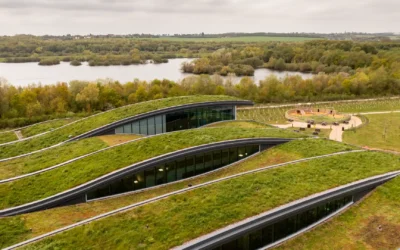- The Biden administration is currently pursuing a strategy driven by subsidies and tax exemptions with over $182 million grants being awarded to transit agency projects to procure electrified buses.
- USD $7.5 billion has been earmarked exclusively for the construction of a domestic network of electric vehicle (EV) charging stations.
- In early May, the US government revealed the ‘Clean Transit for America Plan’ to provide USD $73 billion to electrify public transit buses, delivery trucks, and other vehicles across the USA.
Following the Paris Agreement in 2016, the US government along with many private organizations took initiatives to curtail carbon emissions in the country. As over 29% of the greenhouse gas (GHG) emissions in the US come from the transport sector, its electrification was the natural policy response. GHG emissions from the transport sector are followed by GHG emissions from electricity generation (25%), industry (23%), the commercial and residential sector (13%), and agriculture (10%) in the US.
As per UNFCC, the Paris Agreement is a legally binding international treaty on climate change which was adopted by 196 Parties at COP 21 in Paris in 2015 and has a goal to limit global warming to well below 2, preferably to 1.5 degrees Celsius, compared to pre-industrial levels.
In pursuit of electrification goals President Biden has issued an executive order directing federal officials to plan conversion of all federal, state, local, and tribal vehicles which include 225,000 Postal Service vehicles to ZEVs. As of now there are approximately 645,000 vehicles in the federal fleet including 200,000 passenger vehicles, 78,520 heavy duty trucks, 47,400 vans, 850 ambulances, and 3 limousines.
This article discusses the US bus market, how the US Defense Authorization Act will impact non-market suppliers, and the electrification of buses in the country.
U.S. Bus Market
The American Bus market is divided into buses for school networks and those for routine transit routes. Here, the REV group is the leading supplier of school buses in terms of revenue which is estimated to be USD $2.4 billion per annum. The REV group is followed by Navistar, Collins Bus Cor. Eldorado National Kansas, Alexander Dennis, Van-Con and Lion Electric.
The REV group is a manufacturer of specialty vehicles which include ambulances, trucks, and sweepers followed by heavy duty, luxury, and ADA compliant vehicles.
However, despite the climate concerns and electrification drive, internal combustion engine (ICE) buses are still holding a vast majority of the market with 36,000 sales recorded in 2020 in the US with 30,000 heavy and 6,000 medium-sized buses as to where just 700 sales were recorded for electric buses including 295 heavy and 413 medium sized buses.
With government initiatives in place, the U.S is currently set to have a projected installed base of 25,000 e-Buses by 2025 with orders for 1,800 buses already set in place. Out of all bus manufacturers currently present within the US, the top two players currently advancing America’s electrification process are Proterra and BYD North America.
Based in California, Proterra is an automotive and energy storage company that designs and manufactures electric transit buses and electric charging systems. BYD USA is a subsidiary of BYD China that manufactures fully electric/hybrid cars, buses, and trucks as well as battery powered bicycles, forklifts, and rechargeable batteries.

Figure 1: U.S. bus sales in 2020.
Source: Power Technology Research

Figure 2: U.S. bus market share in 2020.
Source: Power Technology Research

Figure 3: Projected U.S. bus market share in 2025.
Source: Power Technology Research
OEM crisis for electrification
The Biden administration is currently pursuing a strategy driven by subsidies and tax exemptions, with over USD $182 million in grants being awarded to transit agency projects to procure electrified buses and USD $7.5 billion earmarked exclusively for the construction of a domestic network of EV charging stations. In early May, the US government revealed the ‘Clean Transit for America Plan’ to provide USD $73 billion to electrify public transit buses, delivery trucks, and other vehicles across the USA. The plan calls for replacing more than 155,000 commercial vehicles from buses to vans.
However, under the National Defense Authorization Act proposed in 2020, any federal funds allocated to local transit authorities to purchase vehicles from non-market economy suppliers will be prohibited. Under this initiative, BYD is also expected to have no access to state funded projects, leaving behind Proterra as the leader for electric buses in America.
Looking Ahead
With this initiative, America’s projected count of an installed base of 25,000 e-Buses by 2025 may decline.
BYD has an increasing presence in Latin America, with the company having opened its first manufacturing facility in Brazil in 2015. With a move like this underway, BYD might move major chunks of its business as well as future projects to Latin America, increasing electrification beyond current rates.
Commercial & Off-Highway Vehicle Service Overview
The research presented in this article is from PTR's Commercial and Off-Highway Vehicle service. For information about this service please submit a request shown below.
Contact Sales:
Recent Insights
Sustainability Across Sectors: Highlights from GreenTech Festival 2024
Recently, I had the privilege to attend and present at the Greentech Festival, an excellent event in the realm of sustainability. This influential...
US and EU Strategies in Smart Buildings
Download Service Overview The EU and USA aim to decarbonize their building sectors to meet emission reduction targets. Initiatives like the Home...
European Electric Bus Market
The electric bus market in Europe has seen a significant year-on-year increase of 42% in the first three quarters of 2023. Notably, Solaris, which...


